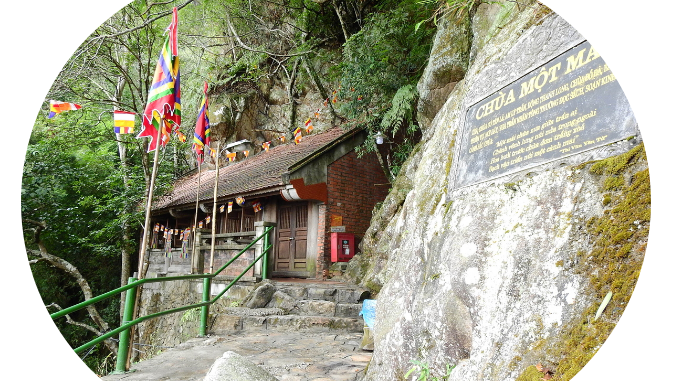
QUANG NINH – The temples in Yen Tu were closed from February 14 to March 2 in response to Covid-19, making the scene quiet.

In the middle of January, Yen Tu scenic relic area, Uong Bi city was deserted. The Yen Tu National Forest and Monuments Management Board has put up a checkpoint that connects access to Covid-19 signs and notices to stop welcoming visitors.

The cable car area is empty. In previous years, Yen Tu received tens of thousands of people every day to visit and worship Buddha. Every year, January is the start of the festival season, and lasts until the March of the lunar calendar. But due to the influence of Covid-19, the Quang Ninh government was forced to give priority to the prevention of epidemics.

An employee is on duty to operate the cable car even though there are no guests.

The footpath to Hoa Pagoda is quiet.

At the temples, the pagoda in Yen Tu is empty. This place becomes peaceful between the bells.

The statue of Hoang Tran Nhan Tong Buddha was created and decorated in Hue Quang tower, Yen Tu, from the 17th century up to now. Statue of Buddha Hoang Tran Nhan Tong was recognized as a National Treasure at the end of 2020.

Hoa Yen Pagoda is the largest and oldest pagoda in Yen Tu, located at 535 m altitude above sea level. The pagoda was built in the Ly dynasty, named Phu Van. Over 700 years ago, this was just a very small workshop – where the Buddha Emperor Tran Nhan Tong preached, at that time the Buddha changed his name to Van Yen. All three of the ancestors of the Truc Lam Yen Tu Zen sect abide at this temple. During the Le dynasty, King Le Thanh Tong came here to see green flowers, camel smoke, and changed his name to Hoa Yen pagoda.

One Roof Temple. In Mot Mai pagoda, there is an underground water stream flowing down a cliff, which is likened to the flow of breast milk that never runs out.

Yen Tu National Forest and Monuments Management Board officers patrol. In Yen Tu there are also hundreds of ancient leashes over 700 years old, all numbered for guard care. In the photo is an ancient chain of leashes, also known as the fake royal harp, red conifer, is listed in the Red Book of Vietnam. This tree species is said to be planted at the same time that Thai Emperor, Buddha Emperor Tran Nhan Tong came to Yen Tu to practice and establish Truc Lam Zen sect.
From 0:00 on March 2, Quang Ninh officially reopened intra-provincial tourism activities. According to statistics of Uong Bi City Culture and Information Department, on March 3, the number of visitors to Yen Tu was 375 people.
Follow vnexpress
